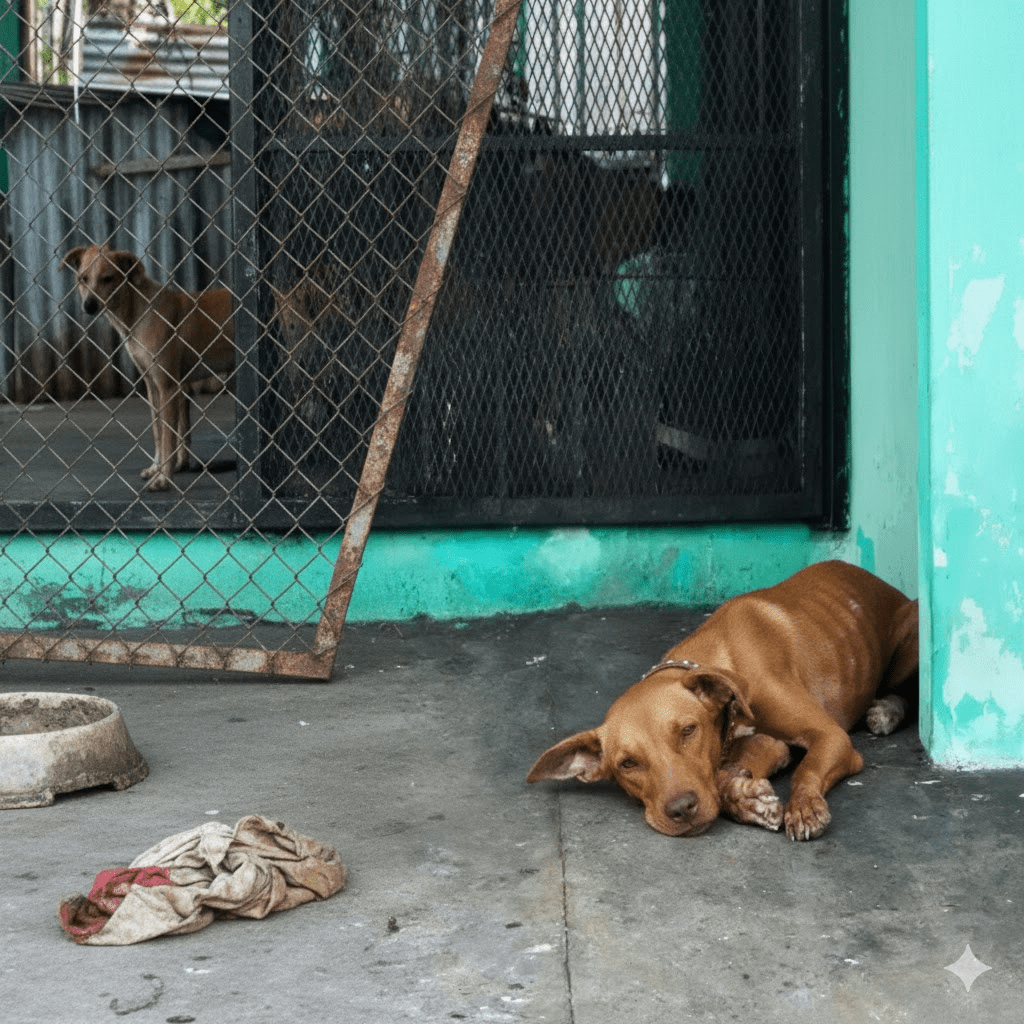The image before us is a stark reminder of a pervasive and heartbreaking issue: animal neglect. It depicts a dog, clearly emaciated and with visible wounds, lying on cold concrete, its gaze distant and resigned. This single frame encapsulates the silent suffering endured by countless animals globally, hidden from public view or, tragically, normalized within communities. The dog’s ribs protrude sharply, a testament to prolonged malnourishment, while its fur appears matted and dull, indicative of a lack of basic grooming and care. The context of its surroundings—a drab, unkempt area—only amplifies the sense of abandonment and despair. This isn’t just a picture of a single animal; it’s a window into a systemic problem that demands our immediate attention and compassionate response. The emotional weight of such an image should compel us to look beyond the surface and delve into the multifaceted causes and devastating consequences of animal neglect, ultimately inspiring us to become agents of change for these vulnerable creatures.

Animal neglect manifests in various insidious forms, often extending far beyond the visible signs of starvation. It encompasses the failure to provide adequate shelter, leaving animals exposed to harsh weather conditions, be it scorching heat or freezing cold. It includes the denial of necessary veterinary care, allowing preventable diseases to fester and untreated injuries to cause prolonged agony. Moreover, neglect can involve a lack of social interaction and mental stimulation, leading to profound psychological distress, fear, and aggression in animals. A chained dog left perpetually alone in a backyard, a cat confined to a small, unsanitary space, or a group of animals living in squalid conditions—all are victims of neglect. These subtle yet devastating forms of neglect often go unnoticed by the casual observer, underscoring the need for a heightened awareness of what constitutes proper animal welfare.

The causes of animal neglect are complex and multi-layered, often stemming from a combination of ignorance, financial hardship, mental health issues, and sometimes, outright cruelty. Some individuals simply do not understand the basic needs of their pets, believing that providing food and water is sufficient, overlooking the importance of exercise, grooming, and medical attention. Economic instability can force owners into difficult choices, where providing for their pet’s needs becomes an insurmountable challenge. Mental health struggles, such as depression or hoarding disorders, can severely impair an individual’s ability to care for themselves, let alone their animals. In the most disturbing cases, neglect is a deliberate act of cruelty, a manifestation of a profound lack of empathy towards living beings. Addressing these root causes is crucial for developing effective prevention strategies.

Prevention is undeniably the most effective approach to combating animal neglect. Education plays a pivotal role, empowering current and prospective pet owners with knowledge about responsible pet care, including nutrition, hygiene, exercise requirements, and the importance of routine veterinary check-ups and vaccinations. Community outreach programs can provide vital resources, such as affordable spay/neuter clinics, pet food banks, and temporary foster care for owners facing financial or personal crises. Stronger animal protection laws and more rigorous enforcement are also critical, ensuring that those who neglect or abuse animals are held accountable for their actions. Furthermore, promoting responsible breeding practices can help reduce the number of unwanted animals that may eventually fall victim to neglect.






